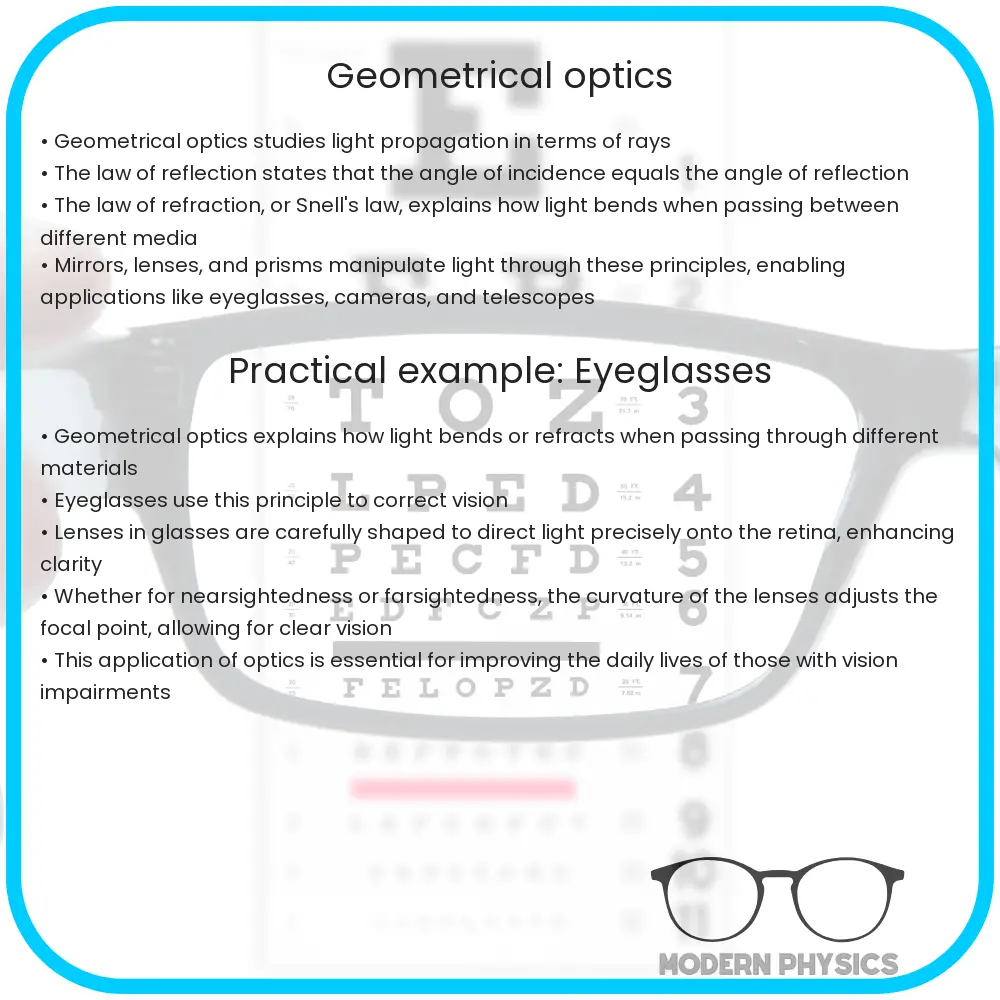Geometrical optics focuses on light’s reflection and refraction using rays, essential for understanding optical devices and technology.

Introduction to Geometrical Optics
Geometrical optics is a branch of optics that deals with the reflection and refraction of light without considering its wave nature. It uses rays to represent the path of light and describes how these rays are bent by lens and mirror systems. This approach simplifies the study of light behavior through basic rules and equations, making it fundamental in understanding optical devices and technology.
Principles of Geometrical Optics
The core principles of geometrical optics include the laws of reflection and refraction. These laws fundamentally shape the way we manipulate and use light in various applications.
- Law of Reflection: This law states that when a light ray hits a smooth surface, the angle of incidence (the angle at which the incoming ray hits the surface) is equal to the angle of reflection (the angle at which the ray leaves the surface). Mathematically, it is expressed as θi = θr, where θi is the angle of incidence and θr is the angle of reflection.
- Law of Refraction (Snell’s Law): This law governs the bending of light rays as they pass from one medium to another with a different density. Snell’s Law is given by n1sin(θ1) = n2sin(θ2), where n1 and n2 are the refractive indices of the two media, and θ1 and θ2 are the angles of incidence and refraction, respectively.
Theory Behind Lenses and Mirrors
Lenses and mirrors are the practical tools of geometrical optics. Mirrors reflect light, whereas lenses refract light, each forming images according to simple geometric principles.
- Mirrors: Mirrors can be categorized into two types: flat and curved (which includes concave and convex). The nature of the image (real or virtual) and its orientation (inverted or upright) depend on the type of mirror and the position of the object relative to the mirror’s focal point.
- Lenses: Lenses are pieces of transparent material, usually glass or plastic, shaped so each surface is part of a sphere. Lenses are mainly of two types: converging (convex) and diverging (concave). They change the direction of light passing through them, focusing or dispersing rays to form an image.
The behavior of lenses is explained by the lens maker’s equation, which provides a way to determine the focal length based on the radii of curvature and the refractive index of the lens material. The lens equation is given by 1/f = (n-1) * (1/R1 – 1/R2), where f is the focal length, n is the refractive index, R1 and R2 are the radii of curvature of the two lens surfaces.
Applications of Geometrical Optics
Geometrical optics finds profound applications across a broad spectrum of fields, from everyday gadgets to complex scientific instruments.
- Visual aids: Eyeglasses and contact lenses correct the deficiencies in human vision using simple principles of refraction.
- Cameras and Photography: Lenses used in cameras manipulate the focus and brightness to capture clear images via refraction principles.
- Optical Instruments: Microscopes, telescopes, and other optical instruments depend on multiple lenses and mirrors to magnify and clarify images of very tiny or distant objects.
Each example underscores the crucial role of optical principles in powering devices that enhance and extend human capabilities.
Understanding Image Formation
Image formation is a fundamental outcome of the interaction of light rays with lenses and mirrors. This process is critical in understanding how optical devices create visual representations of objects.
- Concave Mirrors: These mirrors form images through the convergence of reflected light rays. Depending on the object’s distance from the mirror, the image can be real and inverted or virtual and upright.
- Convex Lenses: Convex lenses converge light rays passing through them to a focal point, forming a real image if the object is beyond the focal length. If within the focal length, the image will be virtual and upright.
These principles not only explain the functioning of simple devices but also lay the groundwork for understanding more complex optical systems.
Challenges and Limitations
While geometrical optics provides a robust framework for understanding light behavior in many practical situations, it has its limitations. The approximation that light travels in straight lines fails when dealing with phenomena like diffraction and interference, which require consideration of light’s wave nature.
- Diffraction: This phenomenon occurs when light bends around obstacles, causing patterns of constructive and destructive interference, which are not explained by geometrical optics.
- Interference: Similar to diffraction, interference involves the overlapping of light waves, resulting in a pattern of light and dark bands not predicted by ray optics.
Understanding these limitations is crucial for full comprehension of optics and for applications where wave optics cannot be ignored, such as in the design of lasers and optical fibers.
Conclusion
Geometrical optics serves as an invaluable branch of physics, offering simple and intuitive tools to analyze and predict light behavior in numerous practical contexts. From eyeglasses correcting vision to telescopes peering into the cosmos, the principles of reflection and refraction are continually at work. However, recognizing the boundaries of these principles is just as important, particularly in scenarios where light’s wave characteristics come into play. By exploring both the capabilities and limits of geometrical optics, we gain a better overall understanding of the nature of light and its interactions with the world around us, paving the way for innovation in optical technology.
